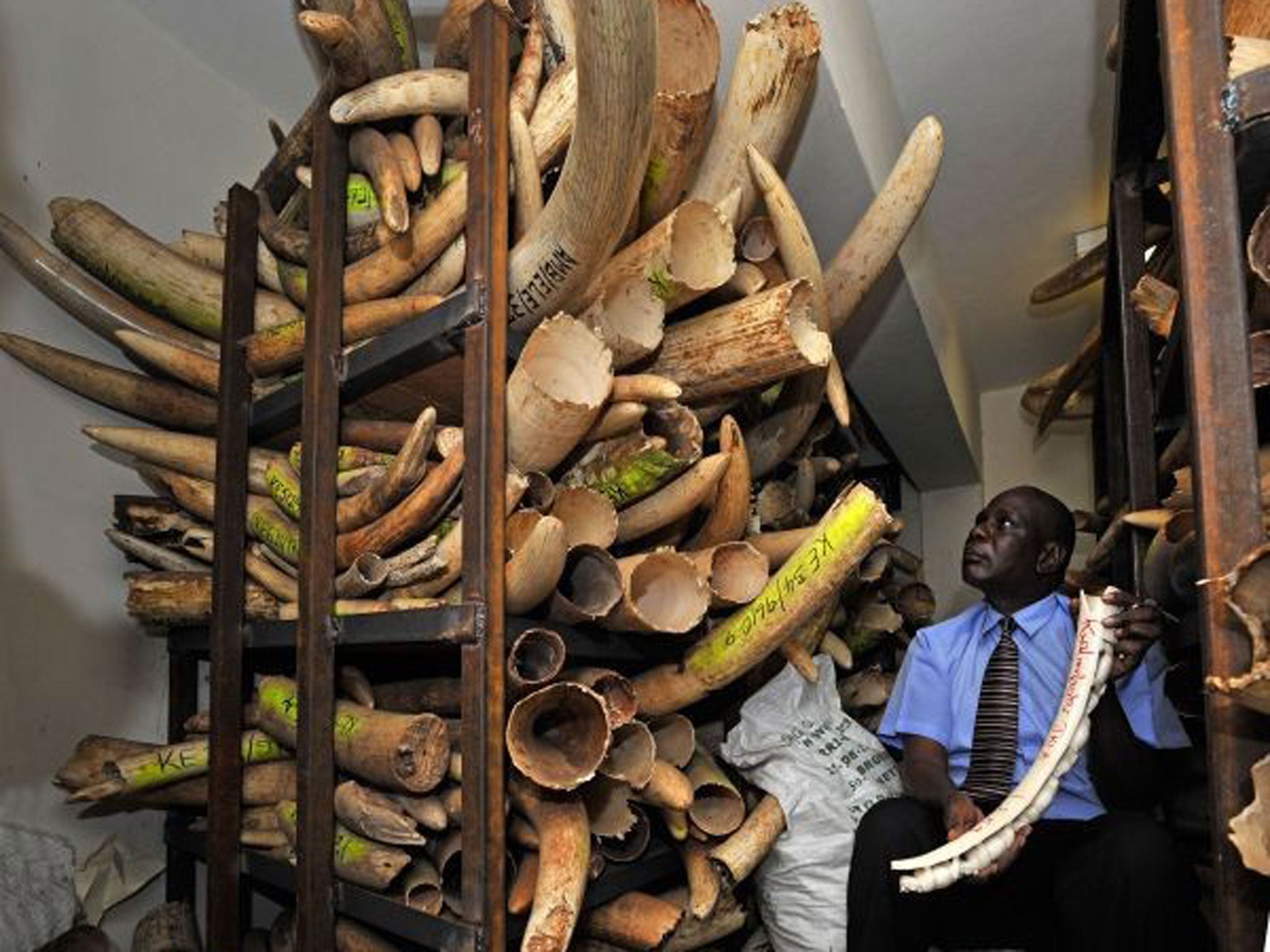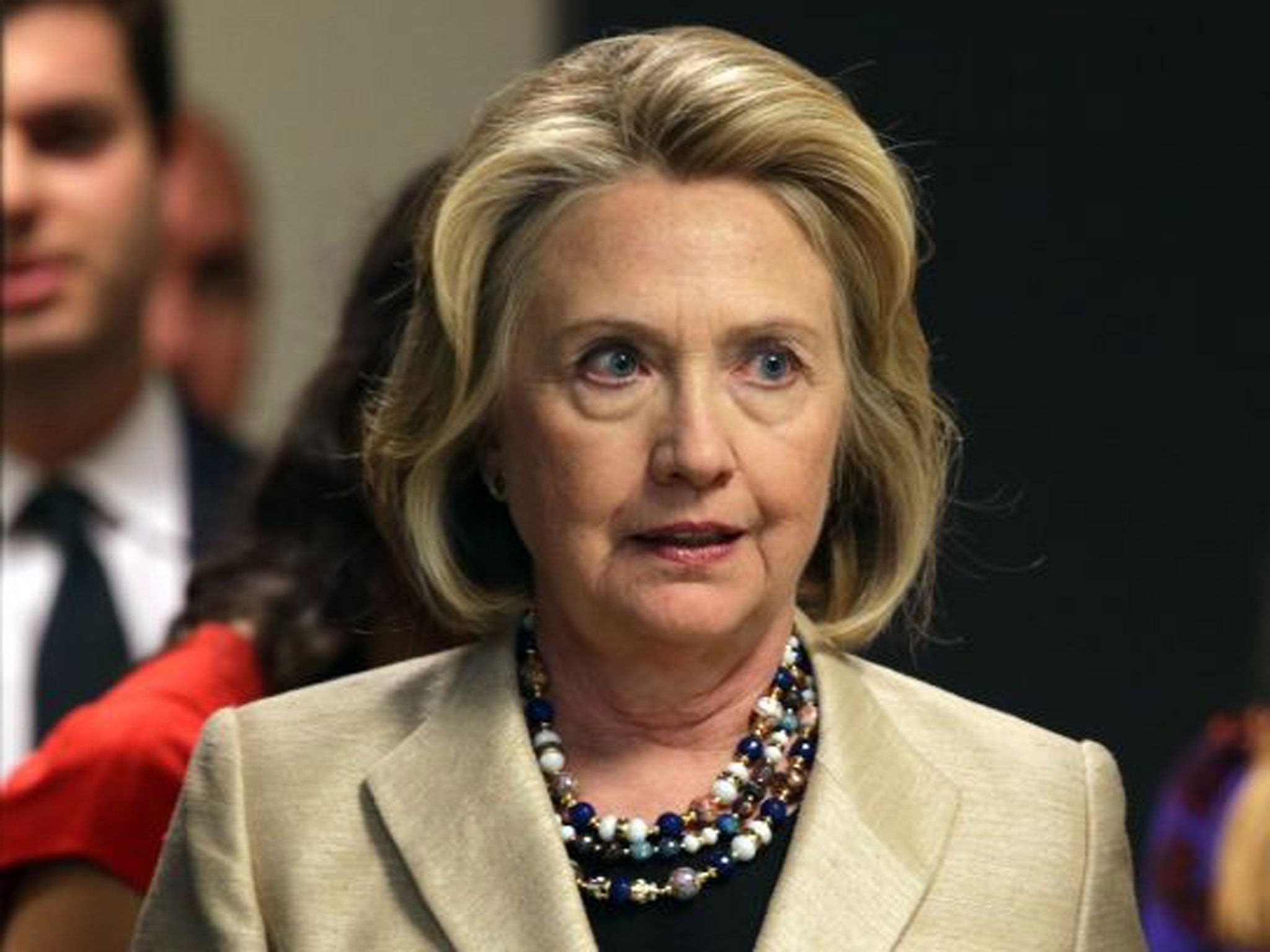Illegal ivory trade funds al-Shabaab's terrorist attacks
A few tusks hacked from elephants shot by poachers can finance a raid like the attack on Westgate mall

Al-Shabaab, the Somali Islamist group that killed dozens of people last month in a bloody four-day siege of the Westgate shopping mall in Nairobi, is deriving funds for its terror campaigns from elephant poaching in Kenya and elsewhere, activists and conservationists claim.
The Elephant Action League (EAL), which has dubbed ivory the "white gold of jihad", said that elephant poaching and the trafficking of ivory is fuelling conflict in Africa by helping groups such as al-Shabaab to mount ever more deadly attacks.
The illicit ivory trade funds "up to 40 per cent of the cost [of al-Shabaab's] army of 5,000 people", according to Andrea Crosta, a director of EAL, and co-author of a 2011 report into the links between poaching and terror groups.
The spotlight on al-Shabaab's funding is more intense than ever after the most deadly terror attack on Kenyan soil since the 1998 US embassy bombings in Nairobi which killed more than 200 people. The Westgate siege has propelled the affiliate of al-Qa'ida to international attention. The group has warned that the slaughter, in which at least 67 people died, is just "the premiere of Act One" and continues to demand that Kenya pull its troops out of Somalia.
The poaching of elephants for their tusks has driven the animal in some countries – such as Sierra Leone and Senegal – to the point of extinction. More than 30,000 elephants were slaughtered in Africa last year alone, 382 of them in Kenya.
Armed with AK-47 machine guns, and with bows and arrows that are sometimes poisoned, poachers slip unnoticed past the few rangers who patrol the conservancies and track the elephants. Often, they target the calves first in the knowledge that the older elephants will bunch up to try to protect them. Then they kill the others. It takes several bullets to bring down such sizeable mammals, and the elephants usually die after immense suffering. The poachers hack off most of the elephant's head to get at the tusks.
Not since the slaughter of the 1980s, which prompted the introduction of an international ban on the commercial trade of ivory, has the situation been so desperate, say conservationists. In less than 30 years, Kenya's elephant population has plunged from 167,000 to only 35,000.
Armed gangs act with impunity, and officials are paid off all along the way. When poachers are caught and brought to justice, they escape with trivial fines or short custodial sentences. Rarely are the brains behind the organised crime syndicates that drive the illicit trade brought to justice.
In relative terms, the rewards for everyone involved are huge. The poachers, who run the biggest risks, earn $50-$100 per kilogram, and the price increases as the ivory moves up the chain. By the time it reaches its final market, which in most cases is China, it can fetch around $3,000 per kilo. Rhino horn is even more lucrative – although the small rhino population is much better protected – commanding up to $65,000 a kilo.
"Like any militias, they [al-Shabaab] are using whatever they can to get easy money," said Paula Kahumbu, executive director at the WildlifeDirect advocacy group. "The ivory trade is just the same as the previous [blood] diamond crisis in West Africa."
Al-Shabaab is not the only terror group to have tapped into the lucrative trade. The Janjaweed of Sudan and the Lord's Resistance Army, which has killed more than 3,000 and displaced thousands more in Central Africa, are both heavily involved in poaching.

Bringing a much-needed political focus to the issue of elephant poaching, the former US Secretary of State Hillary Clinton recently unveiled an $80m plan by conservation groups and African governments to fight poaching, targeting the measures all the way from the poachers to a reduction in demand for ivory.
Her efforts come amid a growing realisation that profits from poaching that go to terror groups pose a direct threat to US interests. While not a new phenomenon, the growing demand for ivory has made the poaching industry a much more pivotal player in the financing of terror.
Conservationists claim it is difficult to assess just how much groups such as al-Shabaab derive from the ivory trade, and many believe the figures are greatly overstated. But in the case of the Somali group, it is one revenue stream among many.
"Al-Shabaab would be incredibly naive to ignore the ivory trade," said Ian Saunders, director of the Tsavo Trust. "In science, you have scientific analysis. In security, you have situation analysis where you never have all the pieces of the jigsaw. The evidence says they are involved, but it is an untraceable form of revenue."
In testimony to US Congress last year, Mr Saunders reeled off compelling figures, noting that the slaying of one elephant was enough to fund an attack on the scale of the 1998 embassy bombings, estimated to have cost $50,000, according to a 2010 report.
"Taking an average ivory tusk weight of 13.6kg (30lb), only 1.6 tusks would be required to fund a spectacular double attack on two US embassies in East Africa," he said. That calculation is based on last year's wholesale ivory prices of $2,357 per kilo; they are even higher now.
Kenya's long and porous border with Somalia makes it relatively easy for militants to hurry the ivory, poached in Kenya and elsewhere in Africa, across the frontier into a largely lawless state that has fostered militants, pirates and gunrunners. Kenya's offensive against al-Shabaab in 2011 pushed it away from the border areas and out of Kismayo, a smuggling hub and al-Shabaab stronghold in Somalia. But the group still controls two lesser ports, through which it smuggles contraband in and out of the country.
Corruption has also played a major role in facilitating the trade of ivory to countries such as Somalia, with officials willing to turn a blind eye for the right price. Some of them are personally involved: one Kenyan army officer was arrested recently for having ivory in his possession. Senior government officials have also been implicated in the trade, among them a county governor and a member of parliament. For reasons that are unclear, they have never been publicly named.
The Kenyan port of Mombasa and Dar es Salaam in Tanzania still remain the two largest exit points for illicit ivory. Experts say it is simple to smuggle out tusks even when officials are present, simply because they lack the manpower to search every container.
"At this moment, you can put ivory in your container, and the chances that somebody will pick it up are not very good," said Gerhard von Rooyen of the Nairobi branch of the UN Office on Drugs and Crime.
"Illicit trade has grown quite a lot in the past two or three years.... The only reason for this is because [the organised crime syndicates] are getting away with doing what they are doing."
He added that urgent measures were required, in particular the provision of the manpower and intelligence-gathering capacity required to search containers at the ports. There should be a shift away from targeting the poachers, who easily outgun underpaid and poorly equipped wardens, towards targeting the people involved at the top.
Ms Kahumbu warned that, as the illegal trade continues, the future for Kenya's elephants is approaching a catastrophic level. Official figures for the elephant population – including the number killed – were, she said, notoriously unreliable.
"You can double or triple the actual mortality rate. If you're losing only 382 elephants, there is no crisis. But there clearly is a crisis," she said.
"Unless something really [significant] happens, we will lose most of our elephants within 10 years."
Join our commenting forum
Join thought-provoking conversations, follow other Independent readers and see their replies
Comments